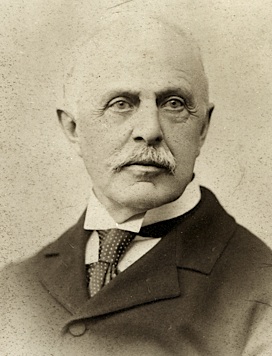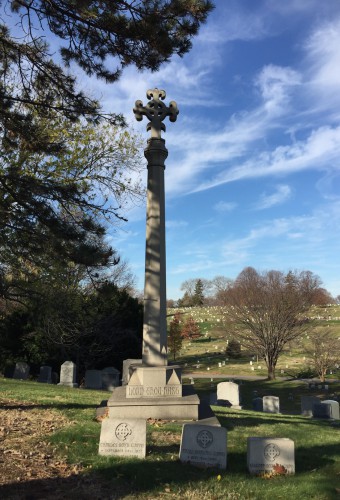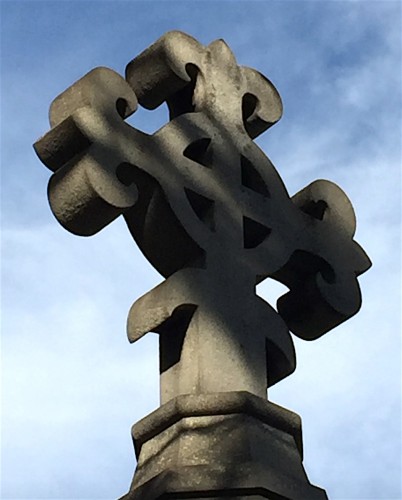One of the big plusses–among many–of being Green-Wood’s historian is that I get to work on several fascinating projects simultaneously. And, when knowledge gained on one of those projects comes together with what I have learned working on another, it is very special.
In 2002, inspired by the restoration and re-dedication at Green-Wood of New York City’s Civil War Monument, we launched Green-Wood’s Civil War Project. At the time, we anticipated that we would be able to, in just a few years, identify 500 or so Civil War veterans, write a biography for each, get a gravestone from Veterans Affairs for those few who lay in unmarked graves, and install those markers at the appropriate graves. These many years later (we used to joke that our Civil War Project had lasted longer than the Civil War; now the joke would be that it has lasted almost 4 times as long), we continue this Project, having recently passed 5,000 identified veterans and about 2,300 markers requested.
Charles Boyd Curtis is one of the individuals we have identified as part of our Civil War Project. Here is the extraordinary biography we put together for him in 2011–with research by Sue Ramsey and writing by Susan Rudin, two of our most dedicated volunteers:
CURTIS (or CURTISS), CHARLES BOYD (1827-1905). Captain, 57th New York Infantry, Companies K and A. Born in Penn Yan, New York, to a family whose ancestry could be traced to early New England stock, he was graduated from Hamilton College in 1848. He then studied law in Chicago, Illinois, where he was admitted to the bar in 1850. On his application for a passport in 1855, he described himself as 5′ 4½” tall with gray eyes, chestnut hair, a high forehead, short chin, long face and florid complexion. During the Civil War, he enlisted as a first lieutenant at New York City on August 28, 1861, and was commissioned into Company K of the 57th New York three days later. He was promoted to captain on February 3, 1862, effective upon his transfer that day to Company A. Major Alford Chapman (see) of the 57th commended Curtis for special mention in his field report describing the actions at Antietam, Maryland, on September 17, 1862. After Curtis’s discharge on June 8, 1863, he resided in New York City where he was a commission merchant. As per the census of 1880, he was a retired lawyer. His application for an invalid pension was granted in 1890, certificate 605,499. According to his obituary in the Evening Post, Curtis was the author of several books on art including the Catalogue of the Works of Velasquez and Murillo (1883) and Rembrandt’s Etchings (1889). Also, he was a member of the Union League Club and the American Yacht Club. At the end of his life, he became interested in genealogy and attempted to trace his American ancestors. Curtis last lived at 9 East 54th Street in Manhattan but also had a home in Rye, New York. He died after a prostatectomy. An article in the Brooklyn Daily Eagle on December 18, 1906, stated that his wife unveiled a beautiful 20′ monument topped by a Celtic-style cross, in tribute to him, made by Tiffany Studios from granite in the style of those in English churchyards. One of the inscriptions on the monument reads, “Lord, thou hast been our refuge from one generation to another.” Section 125, lot 31938, grave 25.

So, there in the Civil War biography from 5 years ago was the information about Tiffany Studios–headed by Louis Comfort Tiffany, the great designer who is himself interred at Green-Wood–as the creator of the cemetery monument in the Curtis lot (section 125, lot 31938). But, with 5,000 Civil War biographies, thousands of other biographies of Green-Wood permanent residents, and a total of 570,000 interred at Green-Wood, I must say that, since the Curtis biography was written five years ago, I had forgotten its details. I did know that there was a monument at Green-Wood, across the street from the Mackay Mausoleum, by Tiffany Studios, but I did not know the name on that memorial or the story behind it.
Then, a few months ago, Alice Cooney Frelinghuysen, curator of decorative arts at The Metropolitan Museum, visited Green-Wood with several of her assistants to look at Tiffany stained glass windows and gravestones. They, as expected, had done their homework–and had documentation for several Tiffany creations that they wanted to visit. One of them was for someone named Curtis–did I know where the Curtis Monument was? I responded that I did not–but that we were approaching a monument that I knew was by Tiffany Studios. So I pointed the monument out to them–and got out of the car to check the name on it–it was Curtis!


At that time, the light bulb was dimly lit, but hadn’t quite come fully on.
But just last week I was reviewing the draft of the Cultural Landscape Report that the cemetery recently has commissioned. In the section on cemetery monuments, I came across a discussion of the Tiffany Studios monument to Charles Boyd Curtis. It mentioned that Curtis had served in the Civil War. So I checked our Civil War biographies online to see if we had anything on him–or if he was a new find. And the circle was complete!
It had gone from Civil War Project biography to Tiffany project to Cultural Landscape Report–and now we know that this Civil War officer’s wife commissioned Tiffany Studios to create the magnificent monument that marks the Green-Wood grave of Charles Boyd Curtis—lawyer, merchant, and Civil War captain.